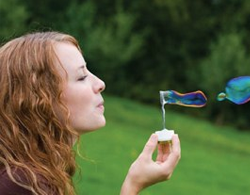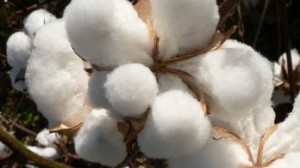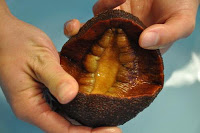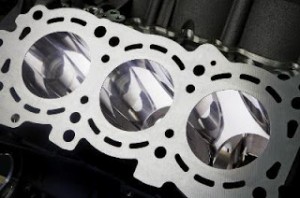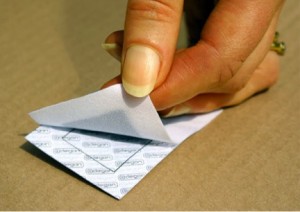Nanooze Blog
This Stuff Resists Everything
Some materials just hate water. They are known as hydrophobic. Superhydrophobic means they really hate water. Now there is a new class of materials that really hate everything. These are superomniphobic. Scientists at the University of Michigan have made a material that not only repels water but repels oils, solvents and other liquids. It is so repellant that these liquids literally bounce off the surface. So what do you do with these superomniphobic materials. In theory they should resist any kinds of stains, not just those from foods that are water based. Not quite ready for prime-time, the materials are easily damaged by mechanical treatments like abrasions. But someday we might not have to worry about getting that stain on our shirt right before a big event. Look below at a series of pictures showing a liquid bouncing off a superomniphobic surface
Magic cotton
Cotton is one of those materials that everyone takes for granted. What’s nano about that? Scientists from Eindoven University (in the Netherlands) have treated cotton with a special polymer that makes the cotton magical. At room temperature the polymer-treated cotton will hold 340% of its weight in water. Water collected from mist and other places. Heat it up and releases the water, pure enough to drink (or water plants). What is great is that it can be used over and over again to gather water and then distribute it. Cotton is grown around the world and treating it with this magical polymer isn’t too high tech, meaning that it might be useful technology for developing countries to help produce clean water.
snail teeth and solar cells
Nature is used as a source of inspiration for a lot of nanometer-scale things that we make. Scientists will examine something in nature, figure out how it works and then try to make something similar. The idea is that a zillion years of evolution has selected for stuff that works very well. So it might be the pads on the foot of a gecko or the wings of a butterfly. Now snail teeth are the latest bit of nature to be examined. Scientists at University of California-Riverside have examined the teeth of a pretty big snail. They discovered this conveyor belt structure with 80 rows of teeth. How the teeth are made in part from inorganic material might provide clues as to how to make more efficient solar cells and batteries
Osorb, Absorbs, Crud
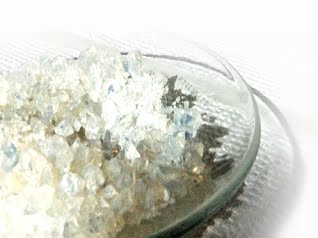 Scientists at the College of Wooster in Ohio have once again proven that sometimes good things come out of random discovers. So is the case with Osorb a nanomaterial made of glass that helps clean up water. The nanomaterial wich is made from nanometer-scale glass particles swells when it comes in contact with various pollutants like hydrocarbons. Clean water is probably one of the most important things facing society and a lot of manufacturing produces stuff that we don’t want to drink. Add a bit of Osorb and it removes the pollutants, plus you can use Osorb again and again.
Scientists at the College of Wooster in Ohio have once again proven that sometimes good things come out of random discovers. So is the case with Osorb a nanomaterial made of glass that helps clean up water. The nanomaterial wich is made from nanometer-scale glass particles swells when it comes in contact with various pollutants like hydrocarbons. Clean water is probably one of the most important things facing society and a lot of manufacturing produces stuff that we don’t want to drink. Add a bit of Osorb and it removes the pollutants, plus you can use Osorb again and again.
Hold Your Breath
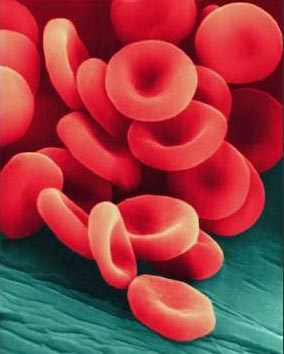 When you suck in a lung full of air some of the oxygen winds up being taken up into the blood. But if you take a big slug of air and shoot it directly into your blood (DO NOT DO THIS AT HOME) it has bad consequences. Scientists at Boston Children’s Hospital have made tiny gas-filled microparticles that can be injected directly into the blood. Testing on animals these scientists were able to keep animals alive for 15 minutes without a single breath. The secret is that the particles are small and can be deformed so they don’t wind up clogging the small capillaries in the body.
When you suck in a lung full of air some of the oxygen winds up being taken up into the blood. But if you take a big slug of air and shoot it directly into your blood (DO NOT DO THIS AT HOME) it has bad consequences. Scientists at Boston Children’s Hospital have made tiny gas-filled microparticles that can be injected directly into the blood. Testing on animals these scientists were able to keep animals alive for 15 minutes without a single breath. The secret is that the particles are small and can be deformed so they don’t wind up clogging the small capillaries in the body.
Scientists Make Tiny Infrared LEDS
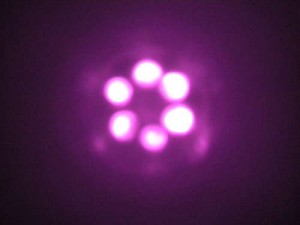 Over the past 50 years, computers have been getting faster and faster which means also we can make them smaller and smaller. Now parts of computers chips are around 30 nanometers—take a hair cut it across its length 1000 times, take one of those pieces and cut it another 3 times and you have it. Pretty small. Some of the ways that scientists hope to make computers even faster is by replacing parts that use electrons and instead use photons. Scientists at Cornell University have made light emitting diodes (LEDs) that produce infrared light and think that they might be a way to have computer parts talk faster than they can with electrons. These tiny LEDs are made using solutions of different metals and are a lot less expensive to make than current methods. Read more
Over the past 50 years, computers have been getting faster and faster which means also we can make them smaller and smaller. Now parts of computers chips are around 30 nanometers—take a hair cut it across its length 1000 times, take one of those pieces and cut it another 3 times and you have it. Pretty small. Some of the ways that scientists hope to make computers even faster is by replacing parts that use electrons and instead use photons. Scientists at Cornell University have made light emitting diodes (LEDs) that produce infrared light and think that they might be a way to have computer parts talk faster than they can with electrons. These tiny LEDs are made using solutions of different metals and are a lot less expensive to make than current methods. Read more
Nano Cargo
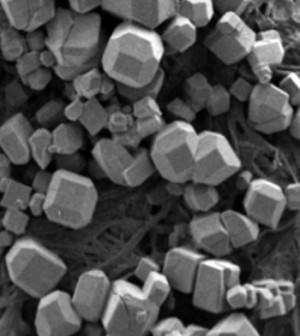 Most of the time when we take medicine most of the medicine winds up doing not much of anything. We take an antibiotic for an infect and only a small number of molecules wind up finding their way to the bacteria that we are trying to kill. Imagine if we could make little containers that we could fill with medicine and then send those containers off only to where they could help fight off the disease. Kind of like FEDEX for aspirin. Scientists at Johns Hopkins and Brown University have made these nano cargo containers using self-assembly. That is a process where the cargo containers zip themselves up without any tools. These 3-D structures can fold themselves up and in the process trap important medicines. Next up is how to deliver these to where they are needed. Stay tuned
Most of the time when we take medicine most of the medicine winds up doing not much of anything. We take an antibiotic for an infect and only a small number of molecules wind up finding their way to the bacteria that we are trying to kill. Imagine if we could make little containers that we could fill with medicine and then send those containers off only to where they could help fight off the disease. Kind of like FEDEX for aspirin. Scientists at Johns Hopkins and Brown University have made these nano cargo containers using self-assembly. That is a process where the cargo containers zip themselves up without any tools. These 3-D structures can fold themselves up and in the process trap important medicines. Next up is how to deliver these to where they are needed. Stay tuned
Read more
Ancient Nano Stuff
Think nano is new? Think again. The term nanotechnology is relatively new but the idea of manipulating matter at the nanometer scale isn’t. Back in the good old days, the really old days of the pyramids, Macchu Picchu and other ancient stuff, artists were doing nanotechnology without even knowing it. The Lycurgus cup which dates back to Rome around AD 400 has glass inside which changes color when light shines through it. The glass has gold-silver alloy (think stuff like steel) nanoparticles that reflect green light but can appear red when light shines through it. Did those artists more than two-thousand years ago know that these nanometer-sized particles would do such tricks with light because of nanotechnology? Nope, but probably through trial and error they figured out a heating process which when they mixed silicon dioxide, gold and silver gave them this magical material.
Next Time You Take Your Phone for a Bath

A regular and superhydrophobic surface The drop on the left lays on the surface while the drop on the right actually bounces. Image is from high speed video (from Nokia)
It happens to most of us, a fumble and whoops the phone, ipod, something goes into a puddle, a pool, yikes the toilet. Wouldn’t it be nice to have our gizmos waterproof? There are a lot of different ways to do that, but making things superhydrophobic might help protect them from getting damaged. Something that is hydrophobic repels water and that is also what is used to make fabrics stain resistant. Scientists from Nokia have followed the lead found in nature creating a surface that water bounces off of. In nature plants like the lotus and animals like the Namib beetle have nanometer-sized structures that repel water. So now scientists by replicating those structures figure it might be a way to protect your cell phone from an errant dip into the pool.
To see superhydrophobic surfaces in action there is a neat video
Get Hot, Get Hothered, Get Your iPhone Charged
Plug it in. Charge it up. We forget there are all different kinds of energy. Your little brother running around is using energy….wasting energy? Light a campfire, that is another kind of energy. Most energy you can convert from one to another. Get on a bicycle, hook it up to a generator and you can make electricity. Scientists at Wake Forest University are looking at harvesting energy from body heat to power different devices. The new material which is called “Power Felt” is made of carbon nanotubes embedded in a plastic fabric that take heat and make electricity. Electricity to power a cell phone or other electronic gadgets. So the next time you are stranded on Everest you can pull out your Power Felt blanket and power up your cell phone….to call for help!!
New Heat Sensors From Butterfly Wings
 The colors in nature are sometimes pigments but other times they are nano-scale structures that don’t absorb different wavelengths of light but diffract them. Think rainbows and you realize the sky isn’t painted with different colors from Sherwin Williams. Now scientists from GE Global Research have used the architecture found in the wings of blue Morpho butterflies to design new thermal mass resonators. Butterfly wings containing carbon nanotubes were able to sense temperature changes of less than 0.02 degrees Celsius in an outrageous 0.025 seconds. Not quite ready for prime time, it is predicted that these materials would be great for sensing vapors and other things like that. How cool is that?
The colors in nature are sometimes pigments but other times they are nano-scale structures that don’t absorb different wavelengths of light but diffract them. Think rainbows and you realize the sky isn’t painted with different colors from Sherwin Williams. Now scientists from GE Global Research have used the architecture found in the wings of blue Morpho butterflies to design new thermal mass resonators. Butterfly wings containing carbon nanotubes were able to sense temperature changes of less than 0.02 degrees Celsius in an outrageous 0.025 seconds. Not quite ready for prime time, it is predicted that these materials would be great for sensing vapors and other things like that. How cool is that?
for more information
Not Much Smaller Than That
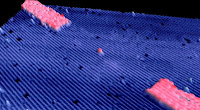 Making things smaller is one of the important things that we do with nanotechnology. Making transistors (those little switches that make up computer chips) smaller has been going on since they were first discovered 50 years ago. Now scientists in Australia and the United States have made a transistor out of a single atom. Yup a single atom. The start by digging a trench and then putting in just one atom of phosphorus. Yup a single atom.
Making things smaller is one of the important things that we do with nanotechnology. Making transistors (those little switches that make up computer chips) smaller has been going on since they were first discovered 50 years ago. Now scientists in Australia and the United States have made a transistor out of a single atom. Yup a single atom. The start by digging a trench and then putting in just one atom of phosphorus. Yup a single atom.
http://preview.tinyurl.com/7bhhgow
Kaboom!
 Dust is not only an annoyance gloaming on to stuff and making us sneeze. It can be dangerous if it gets into the air and there is a lot of it. At the nanometer scale, things are different and things that can burn—burn a lot faster. It is the way the engine in a car works, tiny droplets of gasoline burn really fast in the cylinders of the engine. Even things as innocent as sugar can become explosive if tiny particles become airborne. Now scientists have shown that nanodust is even more explosive than just regular dust. As the size of something is reduced its surface area gets larger. It takes a lot less energy to ignite the material and so it can be made to burn a lot easier. Nobody is sure if this makes the manufacturer of nanomaterials more dangerous but for the past few hundred years the dangers from exploding flour in mills has been well known.
Dust is not only an annoyance gloaming on to stuff and making us sneeze. It can be dangerous if it gets into the air and there is a lot of it. At the nanometer scale, things are different and things that can burn—burn a lot faster. It is the way the engine in a car works, tiny droplets of gasoline burn really fast in the cylinders of the engine. Even things as innocent as sugar can become explosive if tiny particles become airborne. Now scientists have shown that nanodust is even more explosive than just regular dust. As the size of something is reduced its surface area gets larger. It takes a lot less energy to ignite the material and so it can be made to burn a lot easier. Nobody is sure if this makes the manufacturer of nanomaterials more dangerous but for the past few hundred years the dangers from exploding flour in mills has been well known.
read more
Itty Bitty Bit
 Scientists at IBM report that they are able to store data on the smallest set of atoms ever. They can store a bit of data on just 12 atoms. Probably not ready for your thumb drive (or even your pinkie drive) this new approach will still lead to revolutionary ways of thinking about storing data. The new approach uses an antiferromagnetic structure which means the atoms point in opposite directions. Because of that they can also pack a lot more of them together. The work uses the scanning tunneling microscope which was invented at IBM 30 years ago and used to create the famous IBM logo spelled out with just 35 atoms.
Scientists at IBM report that they are able to store data on the smallest set of atoms ever. They can store a bit of data on just 12 atoms. Probably not ready for your thumb drive (or even your pinkie drive) this new approach will still lead to revolutionary ways of thinking about storing data. The new approach uses an antiferromagnetic structure which means the atoms point in opposite directions. Because of that they can also pack a lot more of them together. The work uses the scanning tunneling microscope which was invented at IBM 30 years ago and used to create the famous IBM logo spelled out with just 35 atoms.
http://tinyurl.com/87p5hfn
All We Need Are Nano-Hamsters
 This showed up on one of the nano RSS feeds. It has nothing to do with nano but it is funny and clever. In the quest for renewable energy why not harness the energy hamsters expend running around their wheels. There are hamster-powered floor cleaners, nanogenerators and my favorite a hamster-powered submarine. It isn’t exactly clear how much you have to feed the hamster and how much energy you get, but they are cute.
This showed up on one of the nano RSS feeds. It has nothing to do with nano but it is funny and clever. In the quest for renewable energy why not harness the energy hamsters expend running around their wheels. There are hamster-powered floor cleaners, nanogenerators and my favorite a hamster-powered submarine. It isn’t exactly clear how much you have to feed the hamster and how much energy you get, but they are cute.
http://tinyurl.com/6uu5cjz
A Dog’s Best Friend
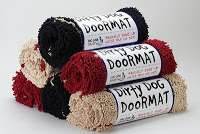 Right! Man’s best friend, the dog, now has his/her own best friend, ‘Dirty Dog, Door Mat’. A nanotech inspired product that according the manufacturer: “Dog Gone Smart’s Dirty Dog Doormat is based on its Advanced Microfiber Technology that entraps dirt, mud and water immediately. The doormat made of microfiber strands provides a super-sponge effect. It can soak up to seven folds of its mass in water and mud and dries five folds quicker when compared to the other doormats. The machine-washable doormat finds application in water and food bowls, under litter boxes, crates and cars.”
Right! Man’s best friend, the dog, now has his/her own best friend, ‘Dirty Dog, Door Mat’. A nanotech inspired product that according the manufacturer: “Dog Gone Smart’s Dirty Dog Doormat is based on its Advanced Microfiber Technology that entraps dirt, mud and water immediately. The doormat made of microfiber strands provides a super-sponge effect. It can soak up to seven folds of its mass in water and mud and dries five folds quicker when compared to the other doormats. The machine-washable doormat finds application in water and food bowls, under litter boxes, crates and cars.”
arrrfff!
Paint Your House in Sunshine
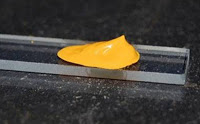 Solar panels are pretty common and you find them on houses on top of building all trying to capture a bit of sunshine and make some electricity. Now some research is suggesting that you can make paint that is able to do the same thing as solar panels—generate electricity. The work from University of Notre Dame is just beginning and the paint is about 10 times less efficient than solar panels but it is a start. They used tiny particles of titanium dioxide (the same stuff as in most white paint) and coated them with cadmium salts that help convert the sunlight into electricity.
Solar panels are pretty common and you find them on houses on top of building all trying to capture a bit of sunshine and make some electricity. Now some research is suggesting that you can make paint that is able to do the same thing as solar panels—generate electricity. The work from University of Notre Dame is just beginning and the paint is about 10 times less efficient than solar panels but it is a start. They used tiny particles of titanium dioxide (the same stuff as in most white paint) and coated them with cadmium salts that help convert the sunlight into electricity.
See more at http://tinyurl.com/82yk95b
Nanooze Labs Opens at Disneyland
 On the West Coast and needing your Nanooze fix? Stop by Nanooze Labs in Disneyland! This new 1500 square foot exhibit features, RopeScope, Zoom and Touch a Molecule. Located within Innoventions in Tomorrowland at Disneyland in Anaheim CA, Nanooze Labs is a fun spot to hang out, explore, watch some outstanding videos and even pick up a copy of the magazine Nanooze. Nanooze Labs is celebrating the International Year of Chemistry and will be on display till September 2012.
On the West Coast and needing your Nanooze fix? Stop by Nanooze Labs in Disneyland! This new 1500 square foot exhibit features, RopeScope, Zoom and Touch a Molecule. Located within Innoventions in Tomorrowland at Disneyland in Anaheim CA, Nanooze Labs is a fun spot to hang out, explore, watch some outstanding videos and even pick up a copy of the magazine Nanooze. Nanooze Labs is celebrating the International Year of Chemistry and will be on display till September 2012.
Your nano-Benz
Sure, maybe it is your grandfather’s car. But Mercedes Benz is now nano. Not a nano car but has a nanomaterial. NANOSLIDE technology involves spraying a thin layer of carbon and iron ‘wires’ on the cylinder surfaces inside of the engine. How thin? About 100 micrometers or 100,000 nanometers. The NANOSLIDE surface looks shiny but it has tiny pores that trap enough oil to lubricate the surface. The technology reduces the engine weight by 4.3 kilograms which they say saves 3% on fuel consumption.
An Answer to Mankind’s Most Pressing Problem.
Maybe underarm odor isn’t the most pressing problem to the planet what with global warming and hunger but it isn’t something to be ignored. Especially when nanotechnology has a solution. ‘Odour tags’ (the British spelling) are placed in garments and supposed to stay there forever. So where is the nano? In the nanoporous activated carbon that is in the pads. They soak up the stink by the stinking chemical binding to the carbon through very weak but effective bonds, leaving you odor (or odour)-free. The company that makes them claims they can be washed or dried so I suppose you can get one for every shirt you have. Activated carbon isn’t new, it was discovered by the British Ministry of Defence (aka Defense) in the 1940’s for use in gas masks. Maybe instead of odour tags we could all just wear gas masks.

